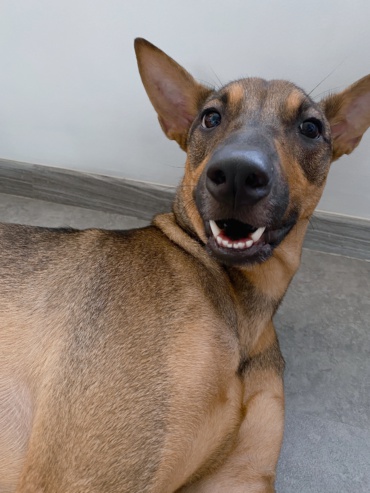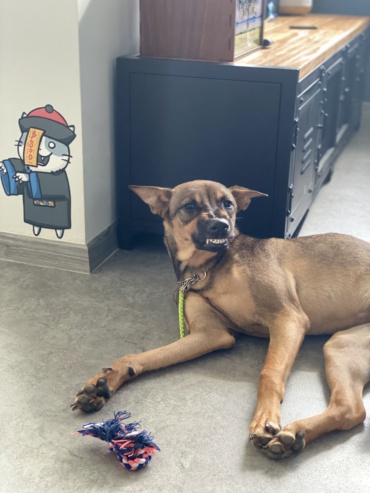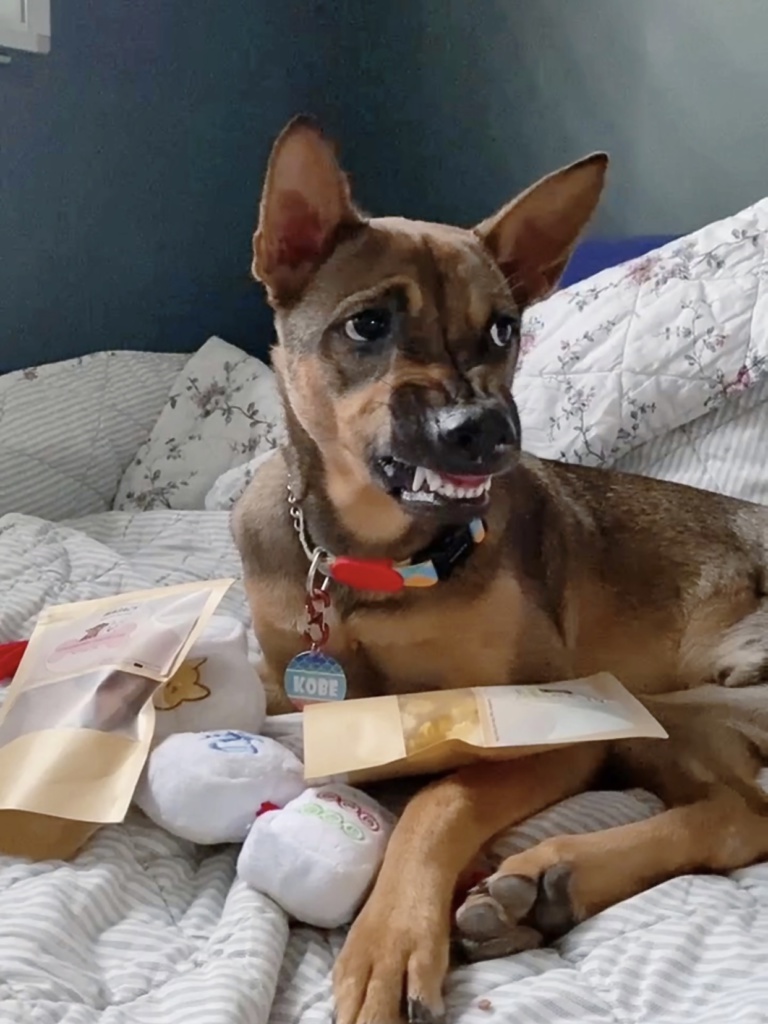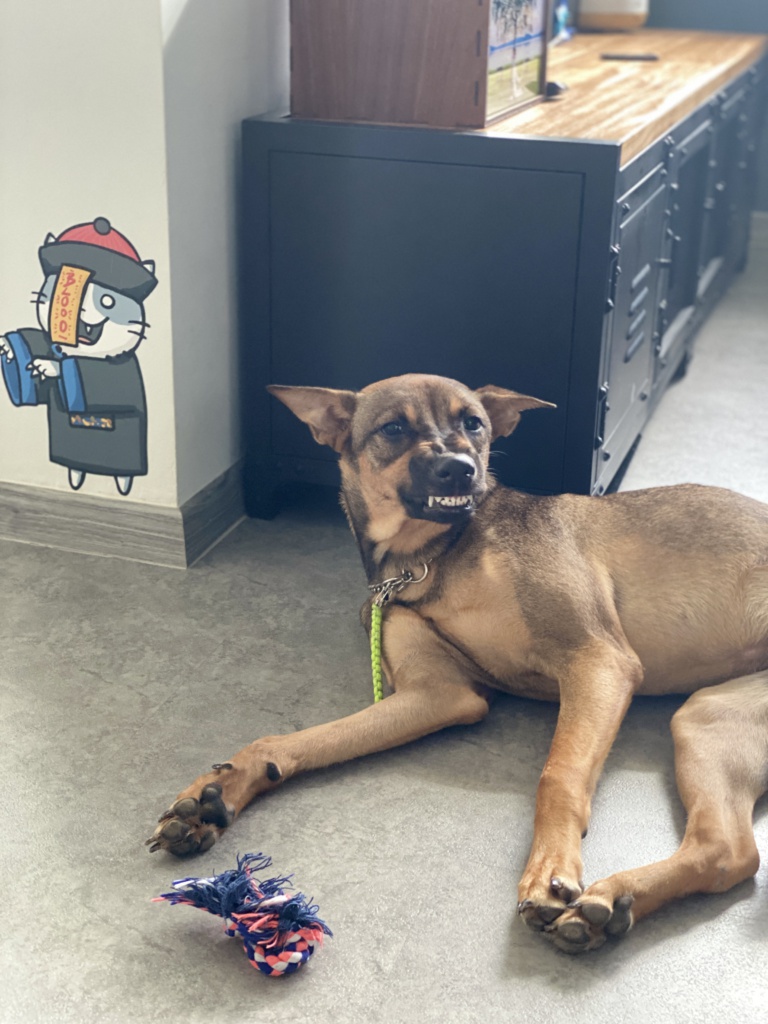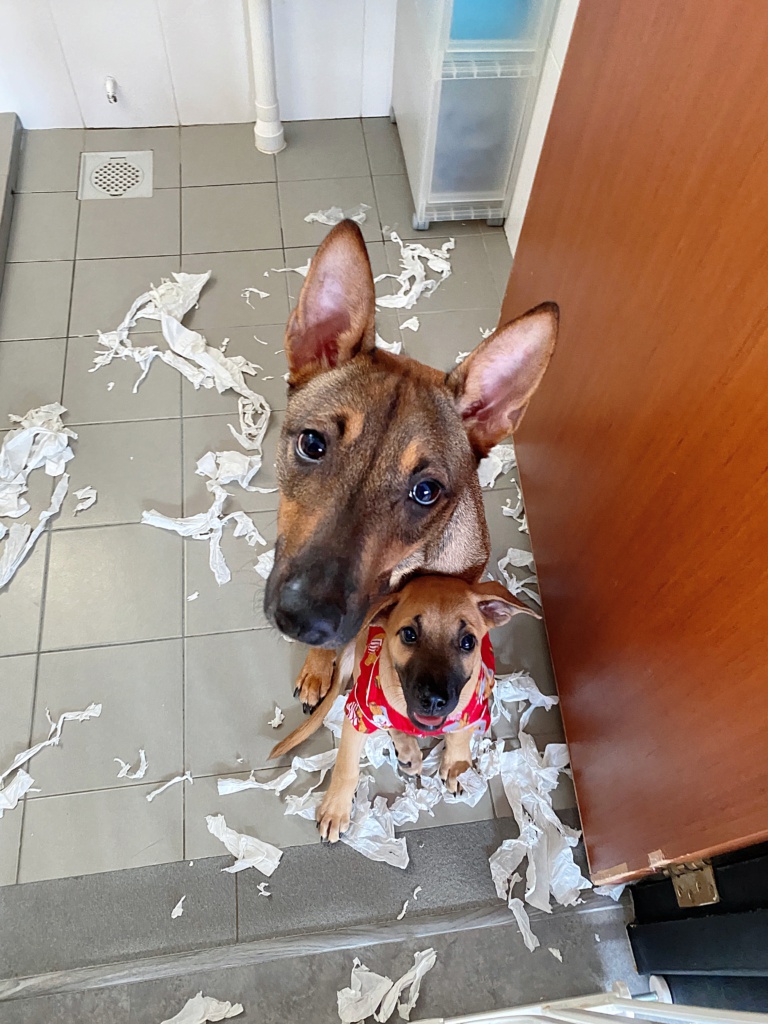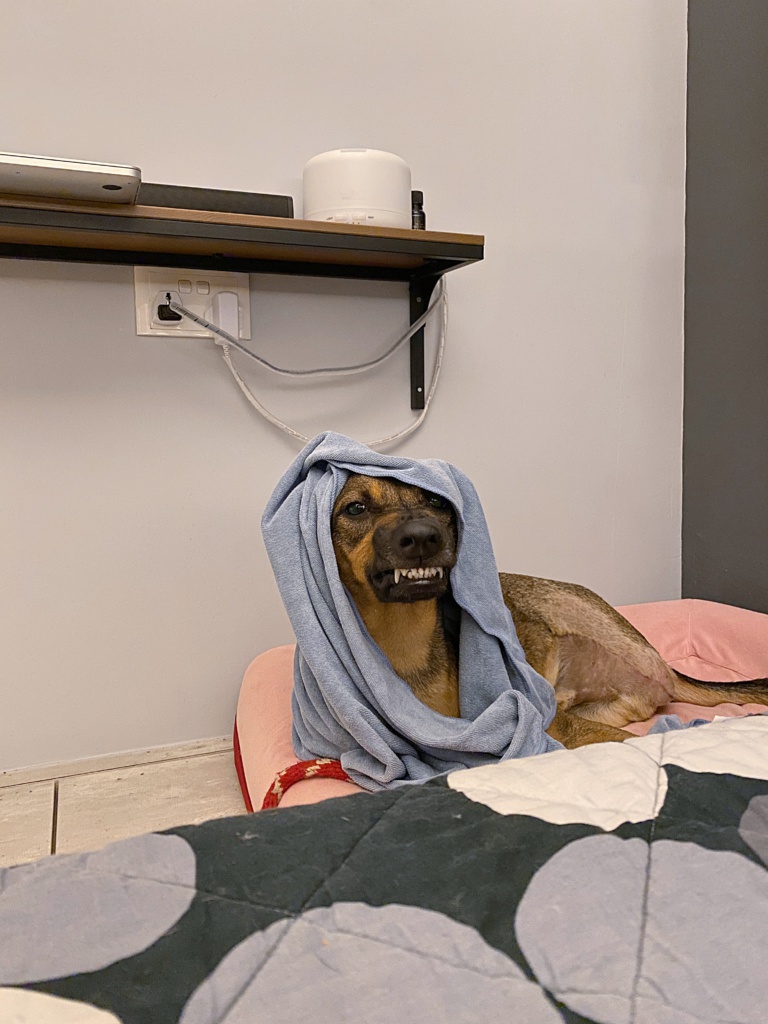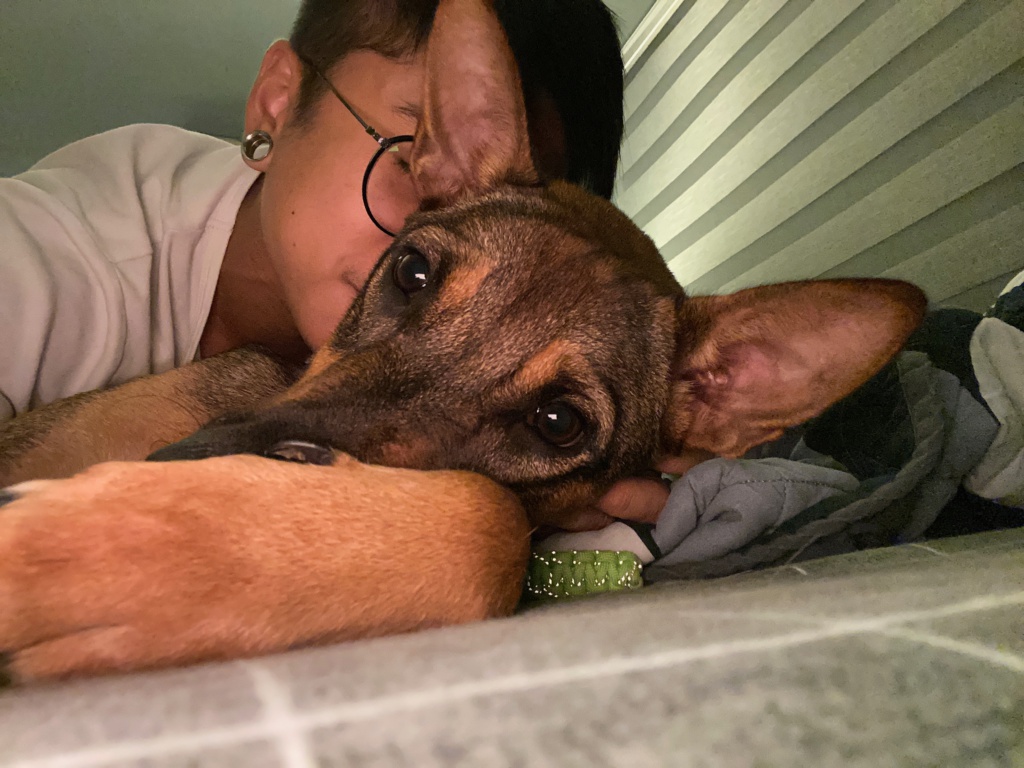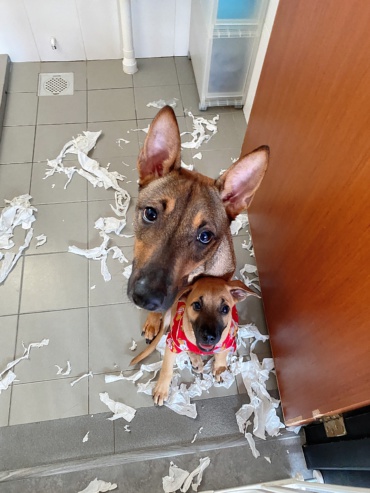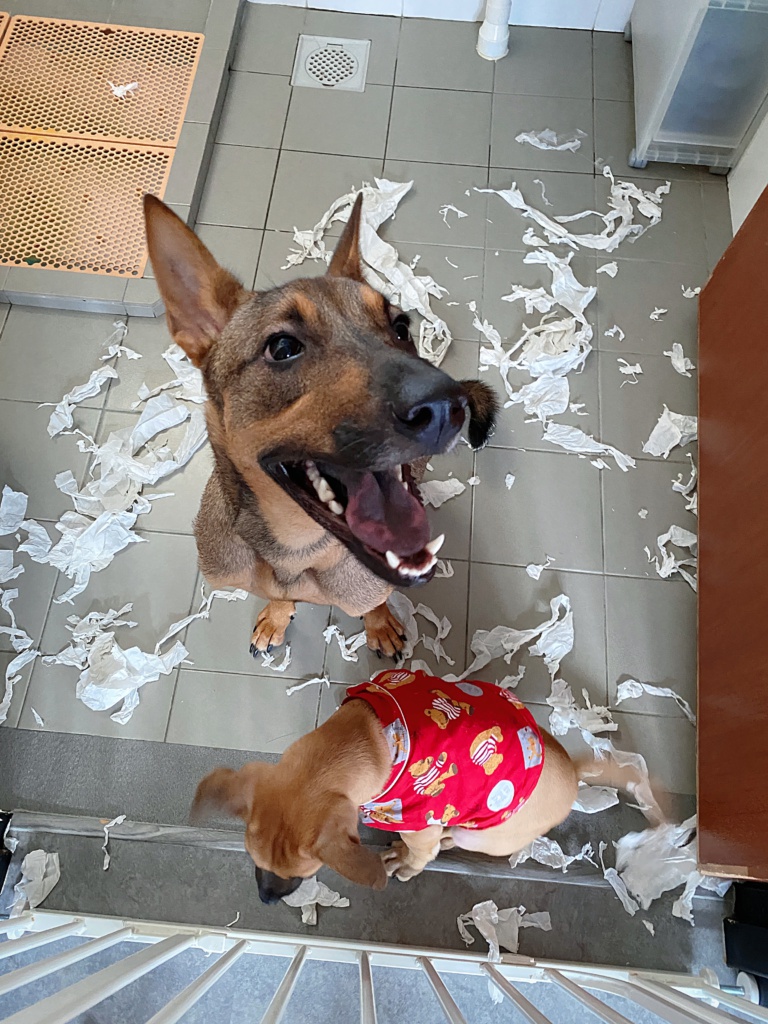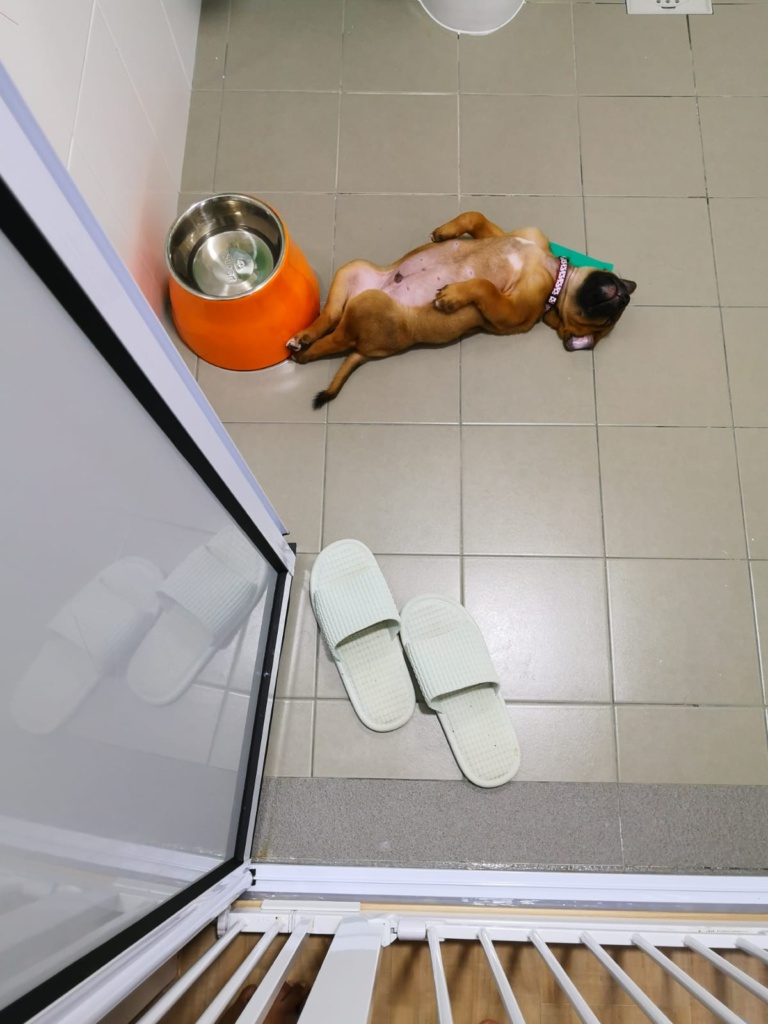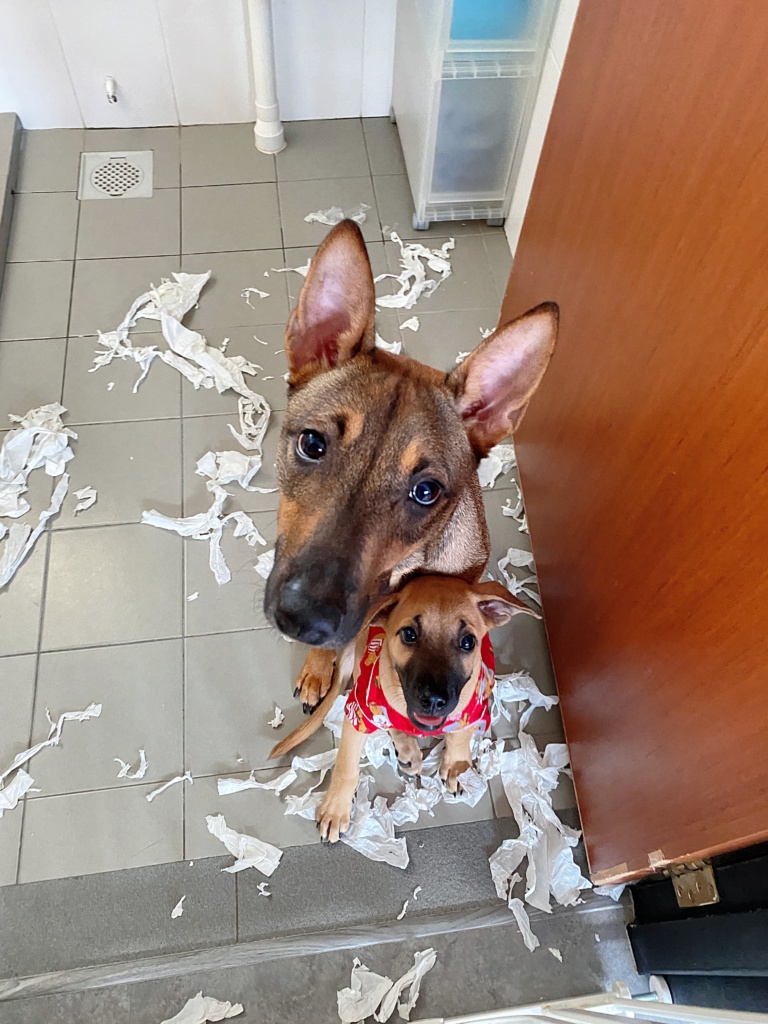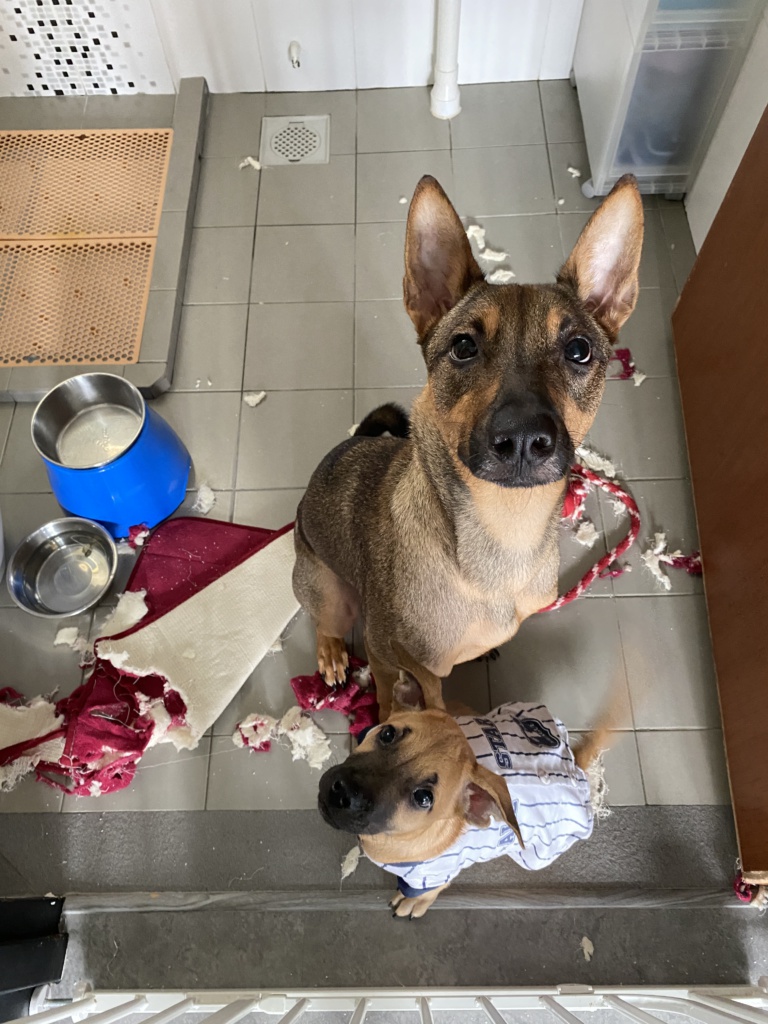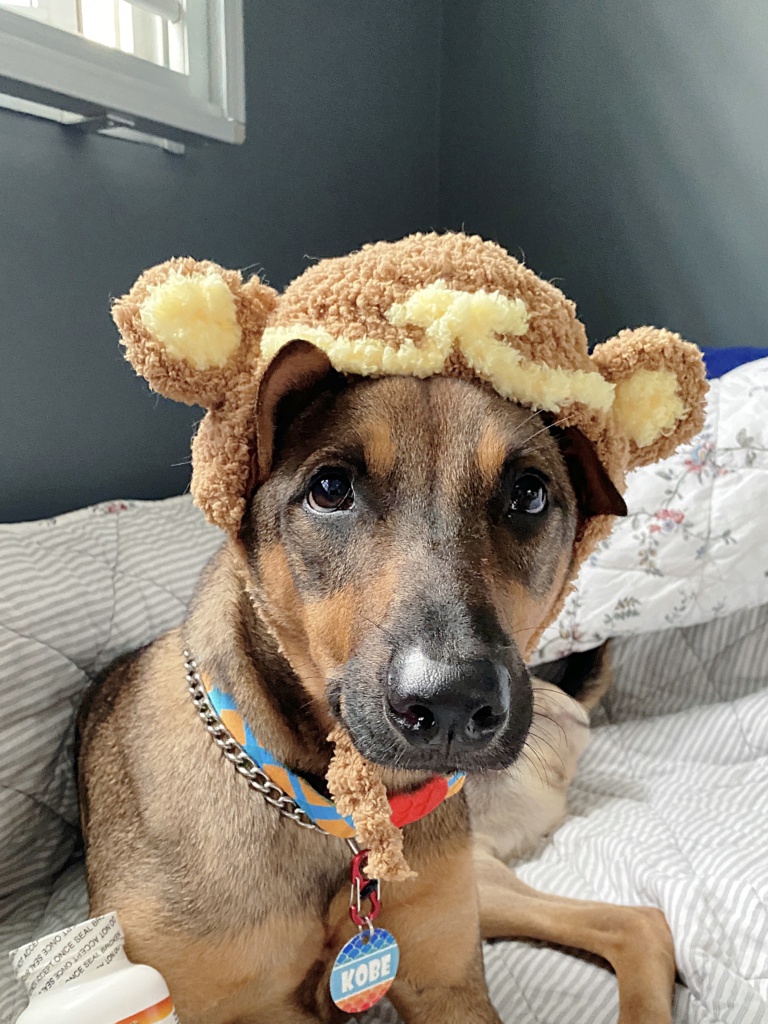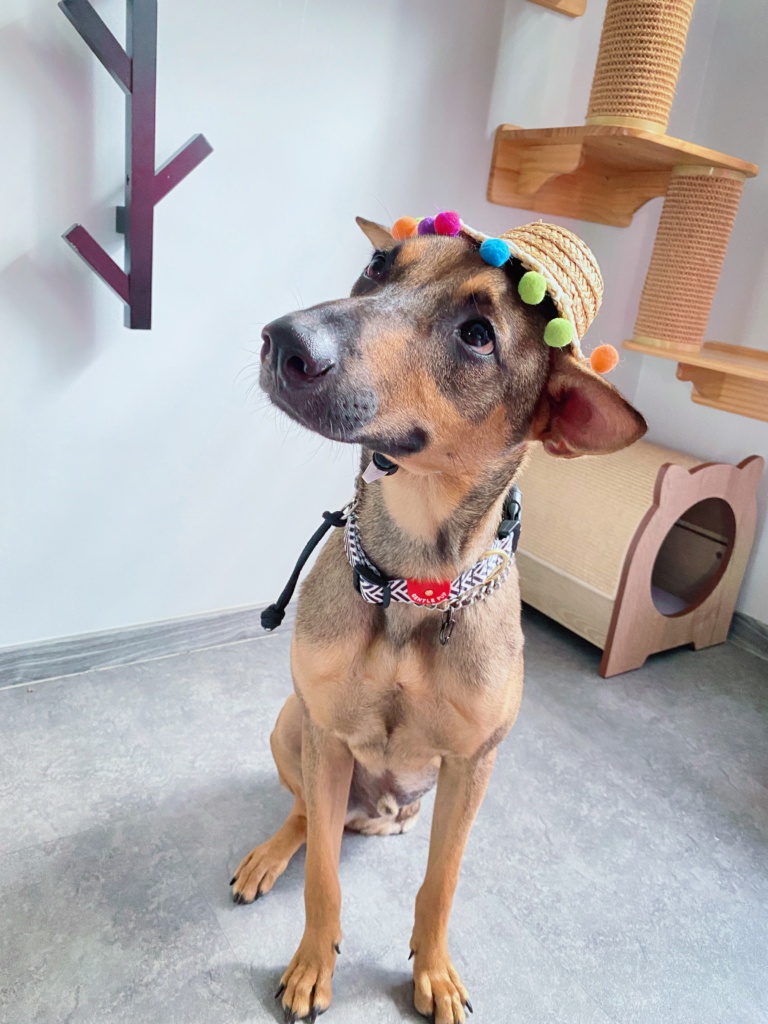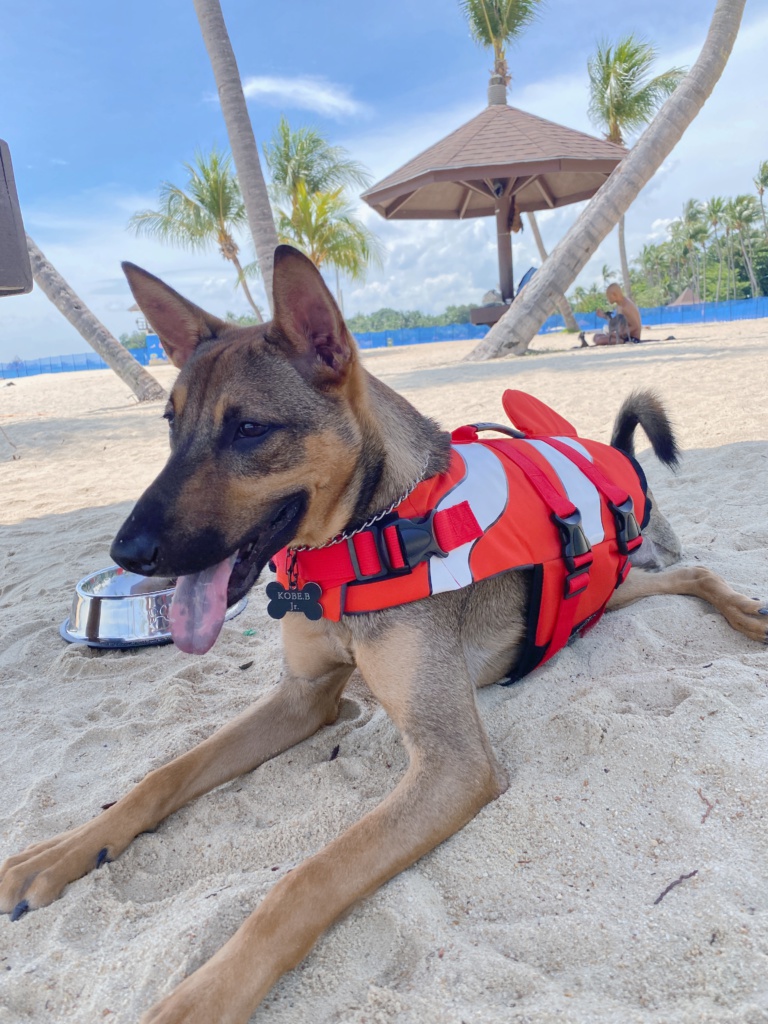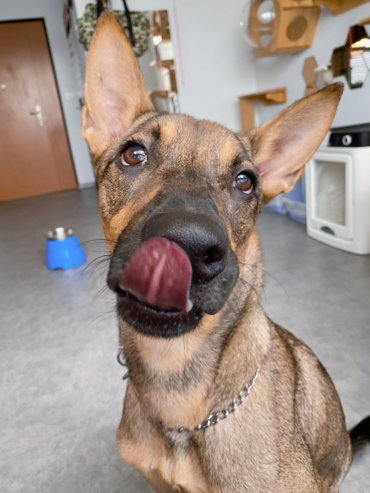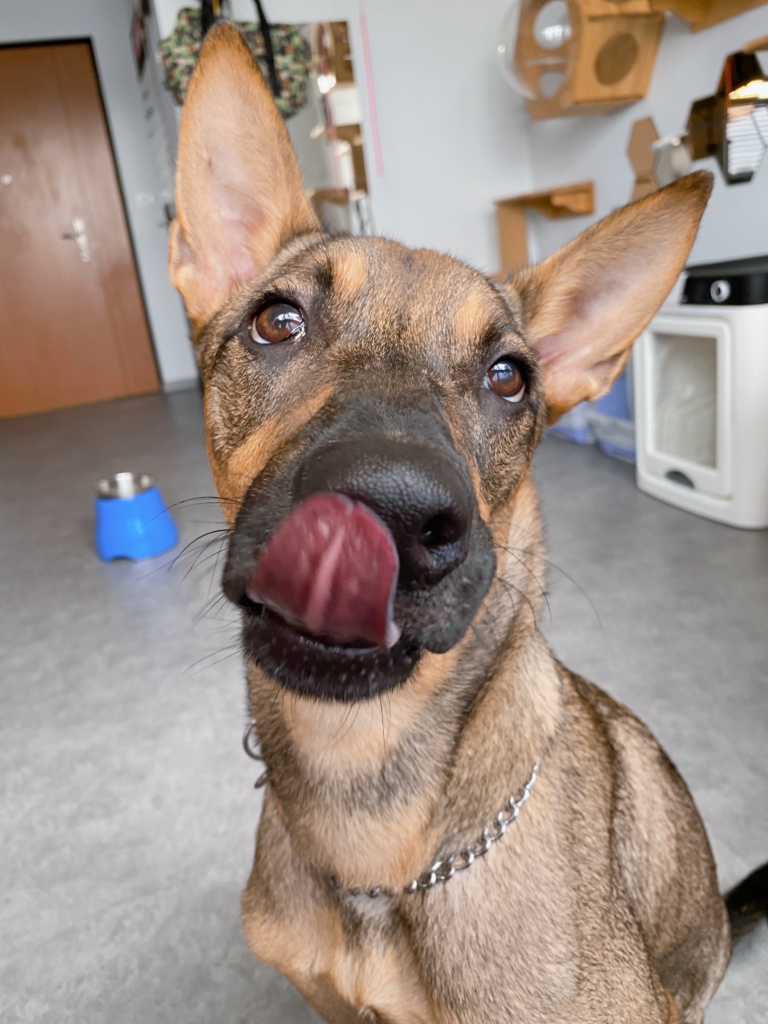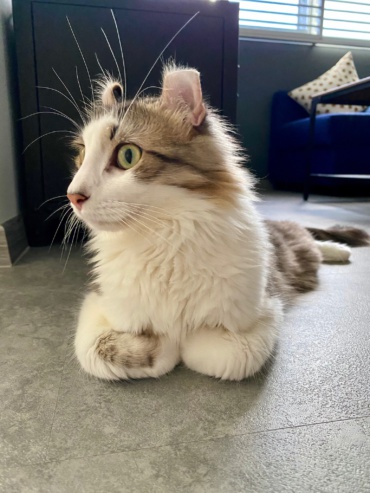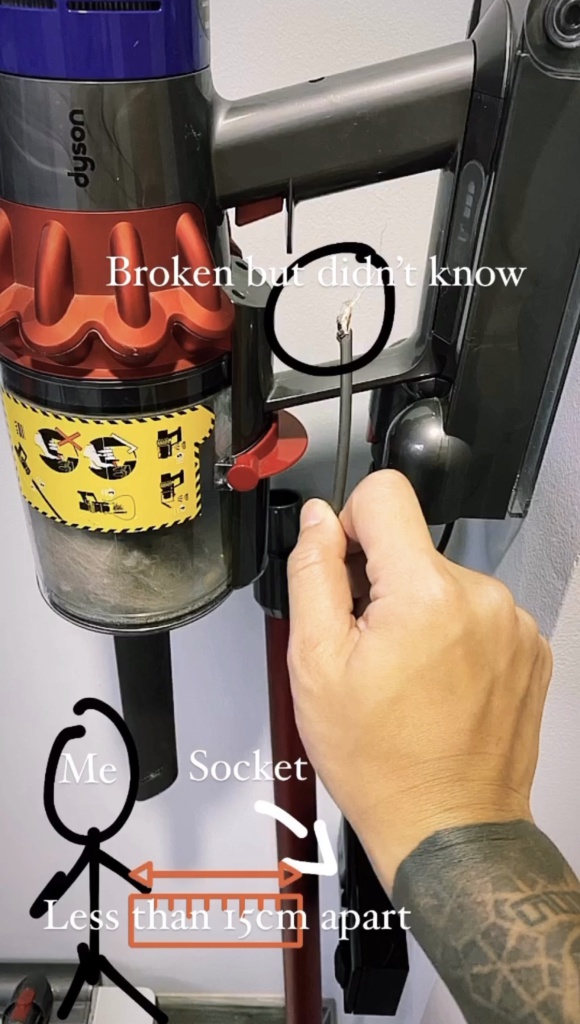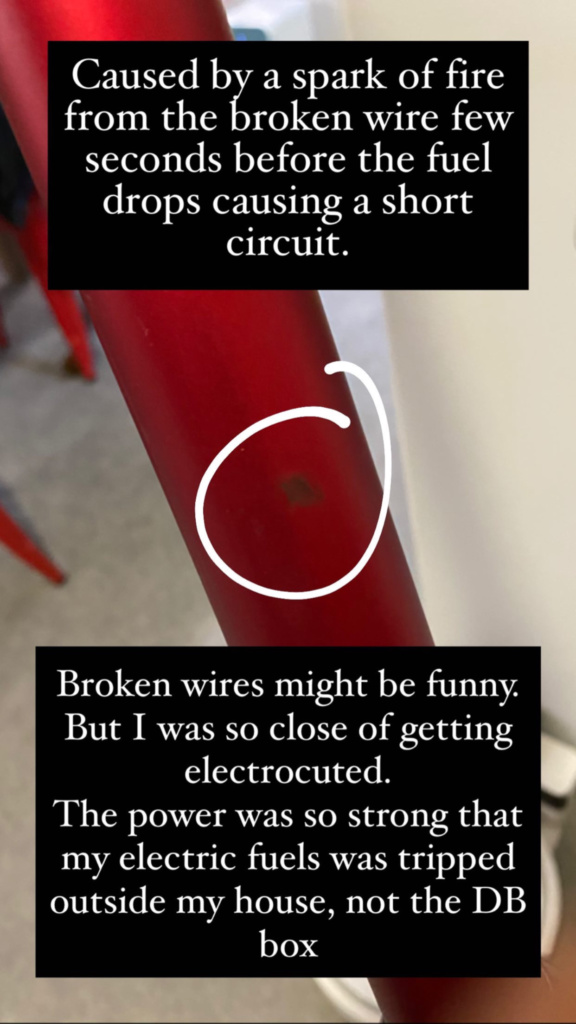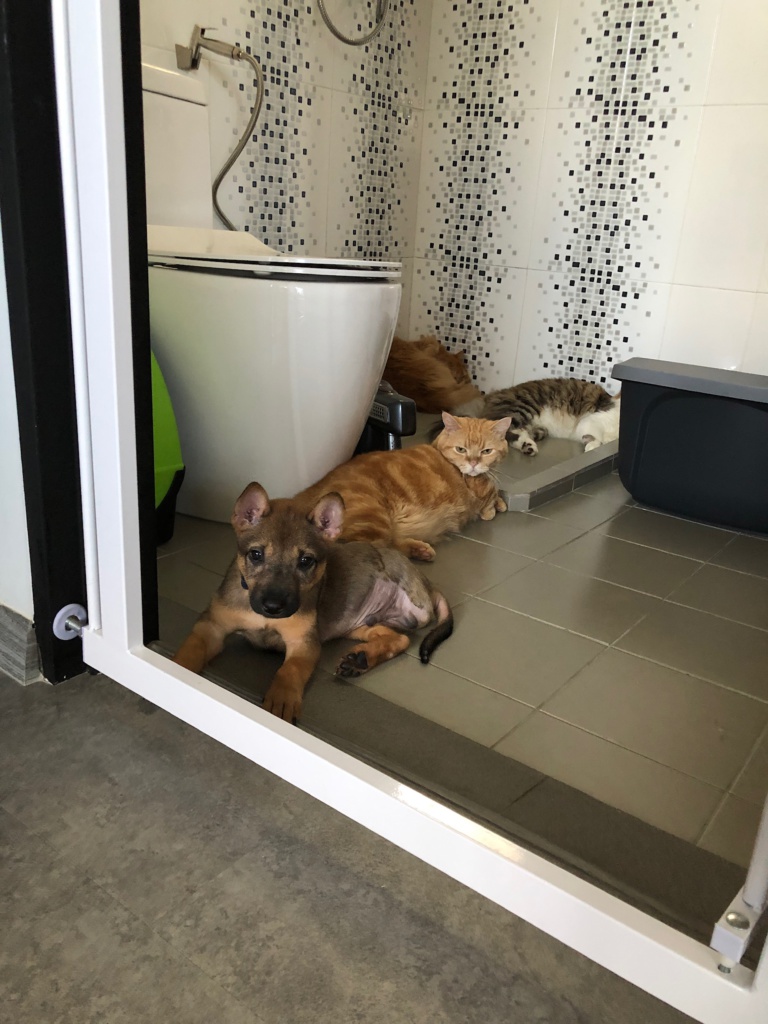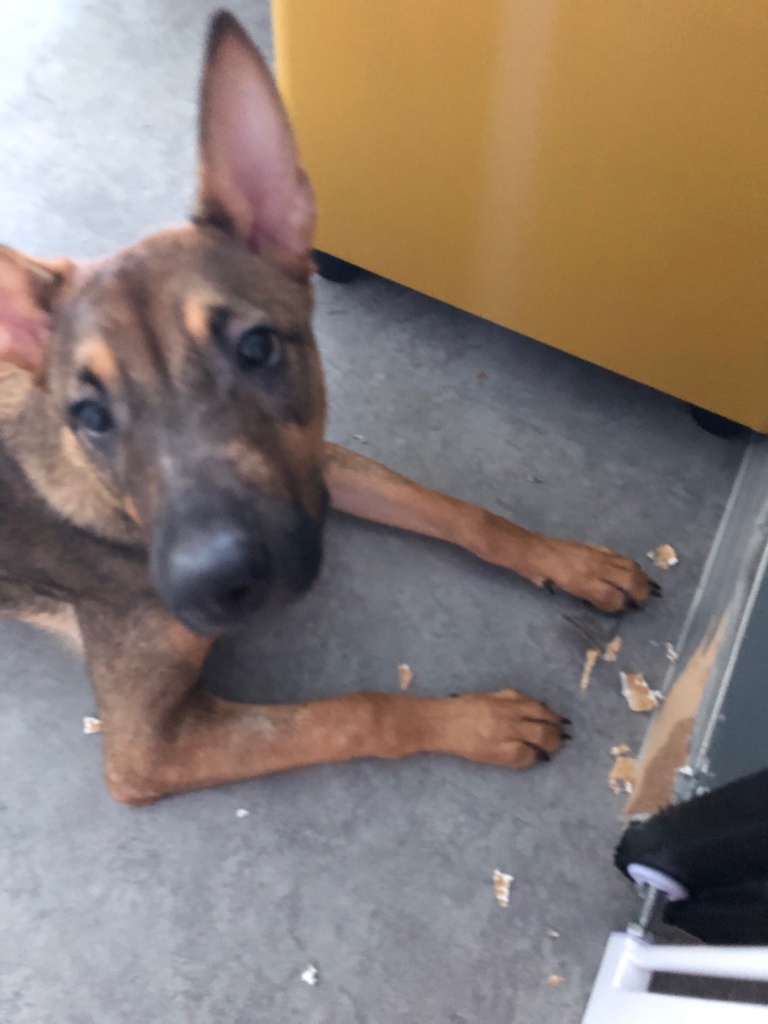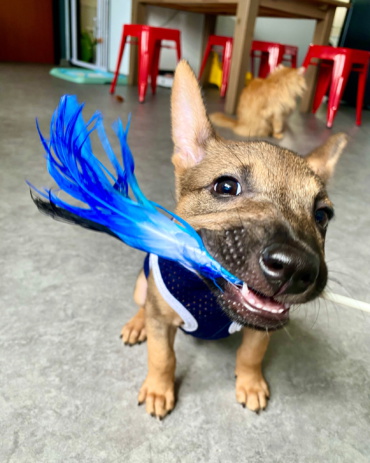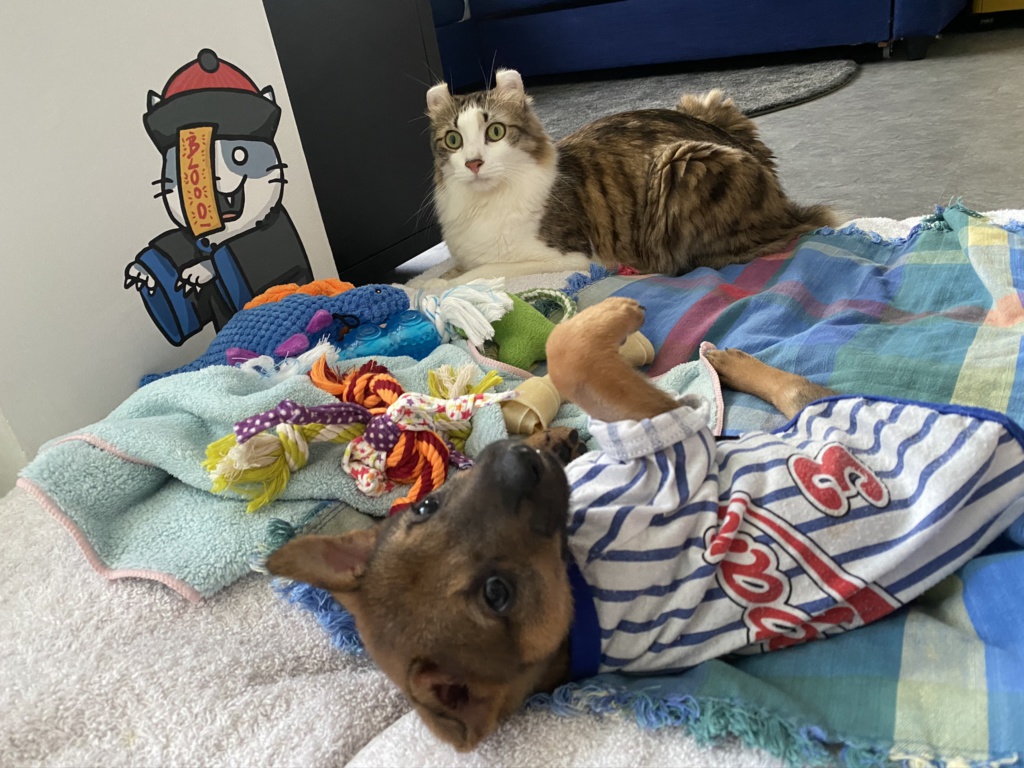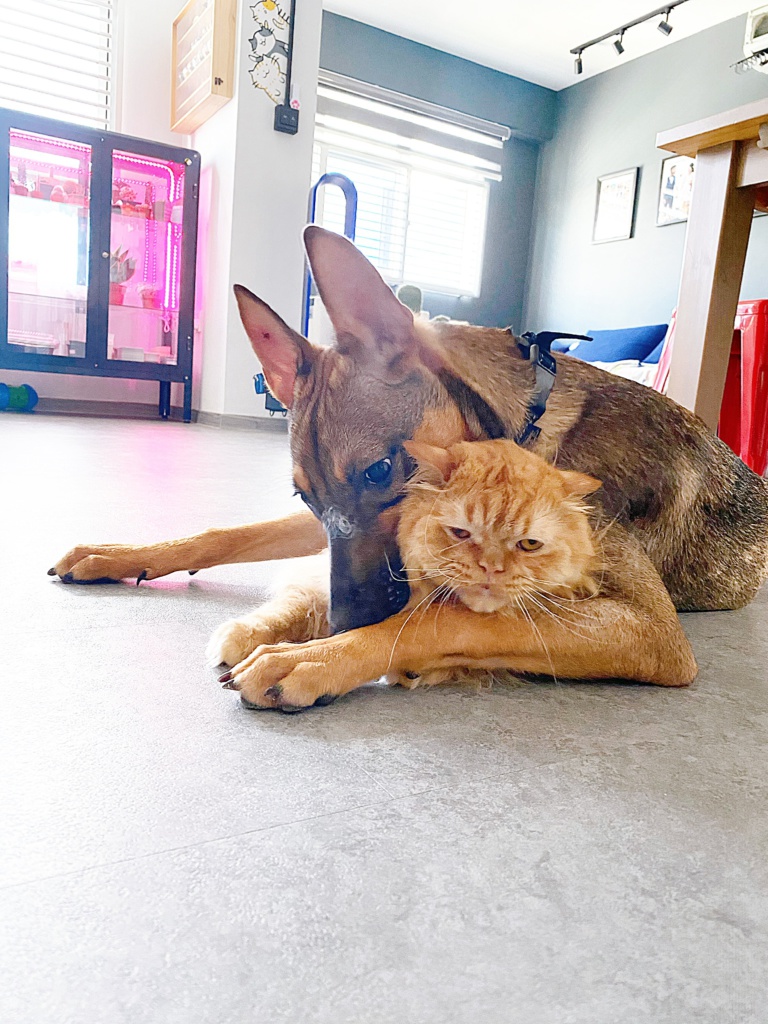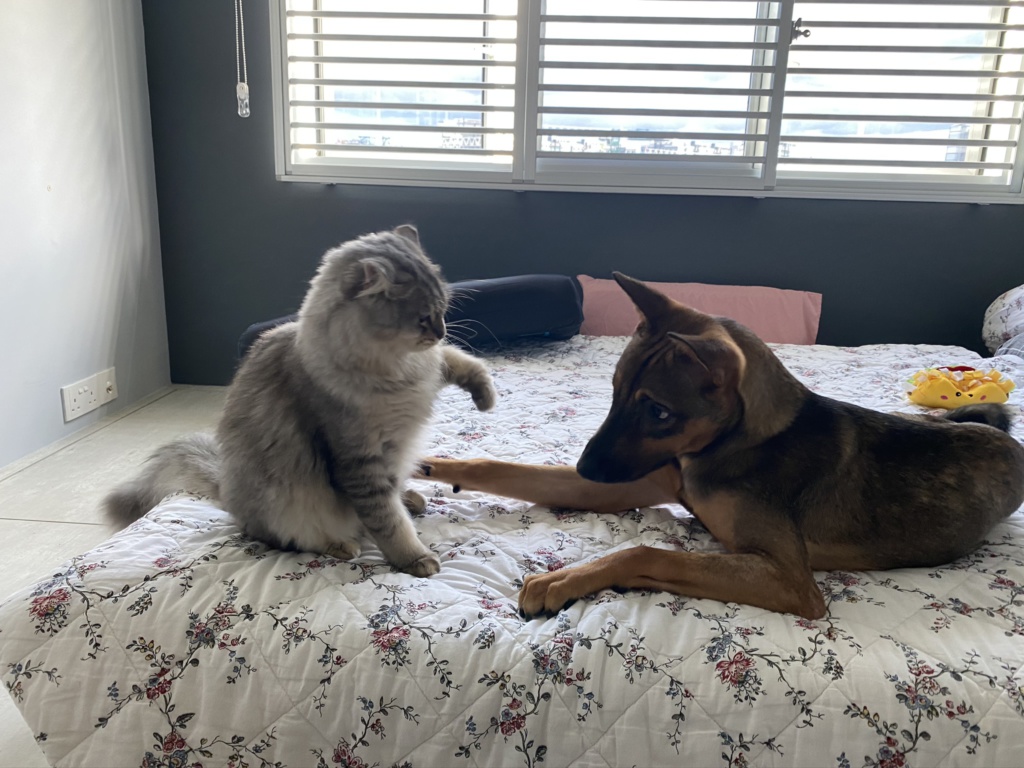Now, today, I want to talk about enthusiastic dog lovers/owners; not the ones that’s afraid.
So with the utmost respect, I say this on behalf of most dog owners, particularly owners that’s struggling or value dog training: don’t touch our dog without our permission.

1. Don’t bend down to stroke my dog.
2. Don’t call it over when it’s walking towards you and you’re walking in the opposite direction, standing outside a shop, or sitting at a table outside a cafe. Or doing sit stay exercise. OR ITS WEARING A “TRAINING” TAG.
3. Don’t stroke my dog when it’s sitting me waiting to cross the traffic light.
4. Don’t lean over and randomly stroke my dog when I’m walking by.
5. And don’t you even think about picking my dog up without asking.
What a miserable, stuck-up dude, you’re probably thinking I am. Talk about being possessive over his dog. Don’t touch then don’t touch lor.
No, I get it, all dogs are cute, they’re painfully cute and nobody likes being told they can’t stroke one (particularly children). Dogs/Puppies bring total joy to people’s lives; my Kobe, in particular, puts a smile on people’s face when they see him wagging his tail, and wanna lean against you for affection when you stood down to welcome him.
Puppies and dogs are so powerful that they have the power to make you coo unabashedly out loud in the middle of the street when surrounded by total strangers. Puppies are great which is why (nearly) everyone wants to stroke them.
To you, dear dog obsessive, stroking a puppy seems normal yeah. why not? It’s also a complement saying your pooch is adorable what.
But I’m here to break the bad news to you. When you stroke a dog without asking the owner’s permission or call it over to you, not only are you being disrespectful and incredibly rude, you’re potentially endangering yourself and the dog, and the owner.
Over the months of being a new Singapore Special / Mongrel dog owner, I’ve noticed there are 2 categories of enthusiastic dog lovers/ people:
1. People are dog owners and respect the importance of training.
2. People who just love dogs but have clearly never owned one (or did so without proper training).
The people who fall into the first category are the only ones who ask permission before meeting my dog and stroking it or even feeding treats.
The second category of people force themselves onto my dog and ignore my existence, and now I’m the invisible dog owner/walker. I tend to abruptly and unashamedly avoid the second category of people and return the favour by ignoring their existence.
If I hear someone coo my dog over to them as he’s walking on a leash, I will just carry on walking without stopping. Guess who’s labelled the rude one? Me.

Someone once said when I was training proper leash work on Kobe: “But I could see him (Kobe) looking at me, he was pulling at his leash to come over to me; he want to say hello to me. Yes, he does, but you know what else my Kobe was interested at and pulls at his leash to get to? Trash, birds, leaf… Oh, and every single person walking on the street.
I’m classified as stuck up because of my face, and rude because I don’t allow people who don’t ask permission to have access to my dog.
Part of that training includes not teaching my dogs to run up to EVERY strangers. Why? Because I am a responsible owners, I think for people that’s afraid of dogs, or due to religion.
Puppies love people, they want to meet everyone and everything because they love cuddles and play. If I allow my dog to run up to anyone once, I have to then justify allowing it to run up to everyone else.
The first time I ever took Kobe out after the circuit breaker, as a naïve new puppy owner, I was stopped 123456 times during a walk, but that’s ok, because people are concern about what happens to his missing limb, and also because we wanted Kobe to be friendly and not afraid of people, but then again, with that we also allow him to charge towards people/kids that’s afraid of dogs, then we become as “Owners that cannot control their dog”.
I’d never had a puppy on a lead before, but I boiled up with rage. I was utterly furious with the overt disrespect and invasiveness. It’s actually a miracle I didn’t punch this person; if it happened again I probably would. The first few weeks of a dog’s life are essential for puppy training and I was very positive and excited to embark this new experience with Kobe, but this random person had ruined my dog’s first associations with going out on a lead. I told that person that Kobe is on training on how to heel properly. “Nevermind la” “Let puppies be puppies la, why so strict” “Still so young don’t need training la” “You see you see, he want to come to say hello to me already!!”
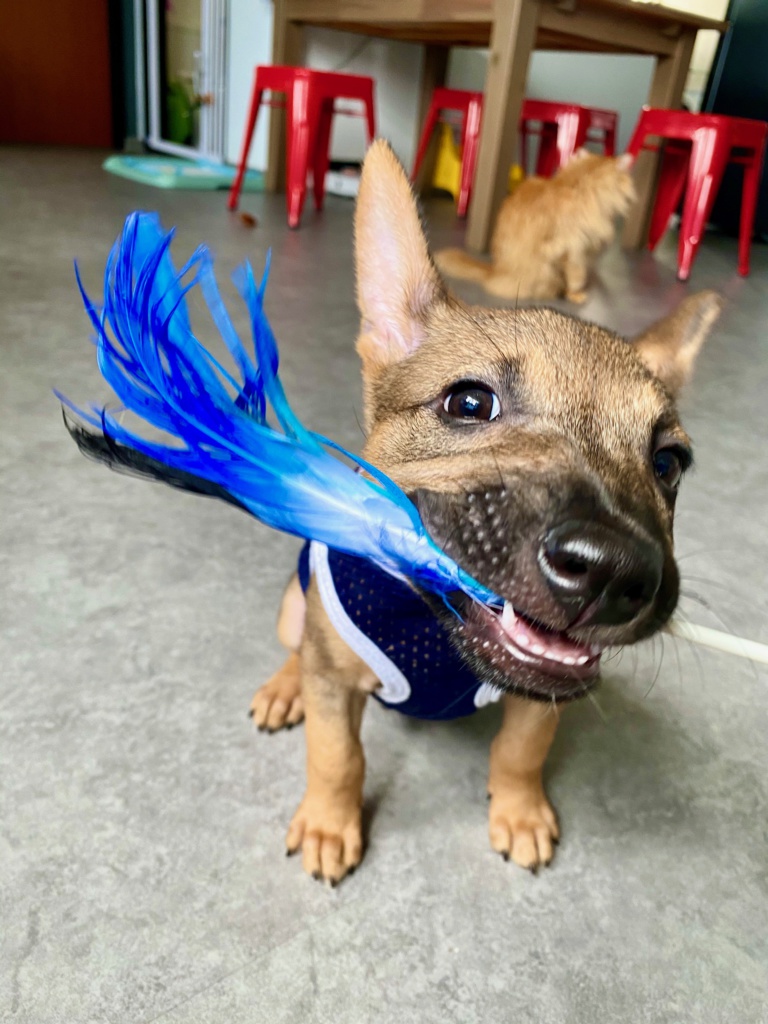
Nobody would do this to a newborn baby. Nobody would run-up to a pram without acknowledging the mother, touch the baby or cuddle right: they’d be arrested for it. But dogs are public property, apparently, so it’s ok?
I’m not being a rude, tight-arsed or stuck up douche when I walk pass you with my dog ignoring your cooing, your tutting and attempts of getting his attention; I just want to be a responsible dog owner who trains my dog. Have you ever wonder if the dog you’re cooing might be actually aggressive? What if my dog bites you because your cooing is actually provoking him and making him anxious?
My dog’s life is my responsibility; he can’t give consent and he doesn’t know the world as well as I do, so it’s my job to keep him safe and protected. I don’t want him running up to random strangers, what if that person is scare and hit my dog as “self defence”, or my dog gets aggressive trying to defend himself and bite that person by accident?
The other day, I was at X dog cafe with a group of friends, Yes all the dogs are off leashed, running around and “enjoying” themselves.
Because its a weekend, that dog cafe was rowdy and filled with loud noise and commotion from big dogs and small dogs. I leash Kobe and walked to our table, and unleash him after he obey my commands. Well for people that met Kobe before, you know he is a sociable dog when it comes to strangers and other dogs. So he was mingling and running around wanting to make new friends with dogs and humans, but then again; due to his insecure nature, certain dogs makes him feel intimidated and he will become a little more anxious and wary.
So when I notice he was a bit “off”, I recall him back and put on the leash, because I am a responsible owner right? I don’t want my dog to be barking the cafe down, or terrorising other dogs while I’m sitting there enjoying my meal.
So as Kobe was sitting beside me with his leash on, someone approached him, X asked me if my dog is KOBE.SG, and I said “Yes! Hello nice to meet you too!” X asked me if X can pat Kobe, I was like sure, why not? Don’t want to be rude right, X asked permission, thats a rare one!
But X display signs of uncertainty, X hover the hand in front of Kobe’s face and not sure if X wants to pat him; I immediately told X that If you want to pat him, pat with confidence, because if you display uncertainty, he will be wary of you and gets anxious and defensive.
But X did not adhere to my advise and continue hovering X’s hand in front of Kobe face, and I saw Kobe starting to snarl… Despite my nerves and a lifetime of people-pleasing tendencies, I finally broke my suppression, “Don’t touch my dog already” calmly but sternly. And explain that he is gonna bite.
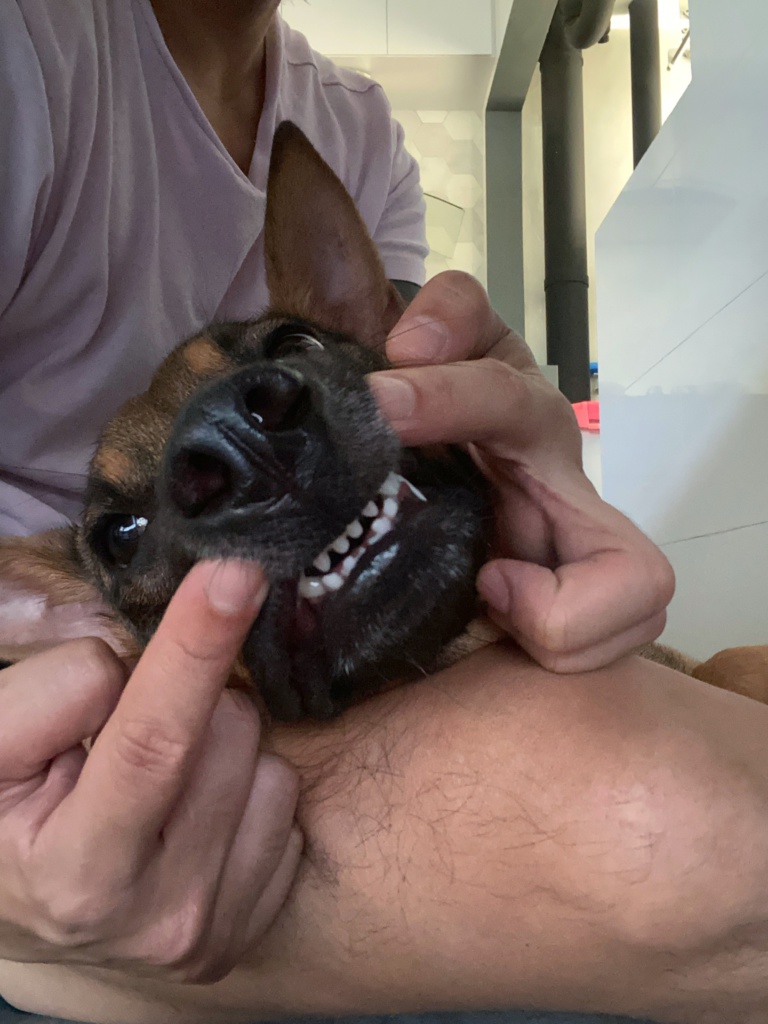
But…….. X did the predictable; which is ignoring my warning…. X is not the first one that takes my warning lightly.. Whats with people not adhering to warning? Do you think that I am joking when I say my dog is gonna bite you?
So after I told X off, X finally decided to move X’s hand forward and pat him, and this time I saw Kobe’s snarl and heard his low growl, shifty eyes and round forehead ready to lunge forward to the incoming hand, and I IMMEDIATELY YANK X’S HAND OFF, AND SAID “I TOLD YOU NOT TO TOUCH HIM ALREADY, HE’S GONNA BITE YOU”
If I can be honest, I was pissed. Was I wrong to feel this way?
And there was a awkward silence after that incident and X decided to excuse themsleves, and despite whatever happen few seconds ago, X decided to crouched down and wave X’s hand in front of Kobe’s face to say byebye… A FEW TIMES… And this time I have to tighten Kobe’s collar and pull him towards me…
Why? I don’t get it.
And this is not the only thing.
Parents.
IF you want to bring your kids out to meet some cute little cuddly dogs, please go to a dog cafe that you get to pat their in house dogs. Its for the safety of your child and other peoples’ dog.
Don’t bring your kids to a dog cafe or a dog run to pat random strangers dogs who you have no idea what their temperament and trigger points are.
I cannot emphasise this enough.
When I was at X dog cafe, I told this kid off 3 times, not to touch Kobe, and she just doesn’t listen, I even told her that he will bite. And my last straw, I raise my voice a little and gave a final warning, and suddenly her parents which is just the next table, decided to speak up after me and told his kid “People already told you don touch already, why you still do that?”
C’mon Sir, shouldn’t you be already educating your kid before she reaches her hand over once again?
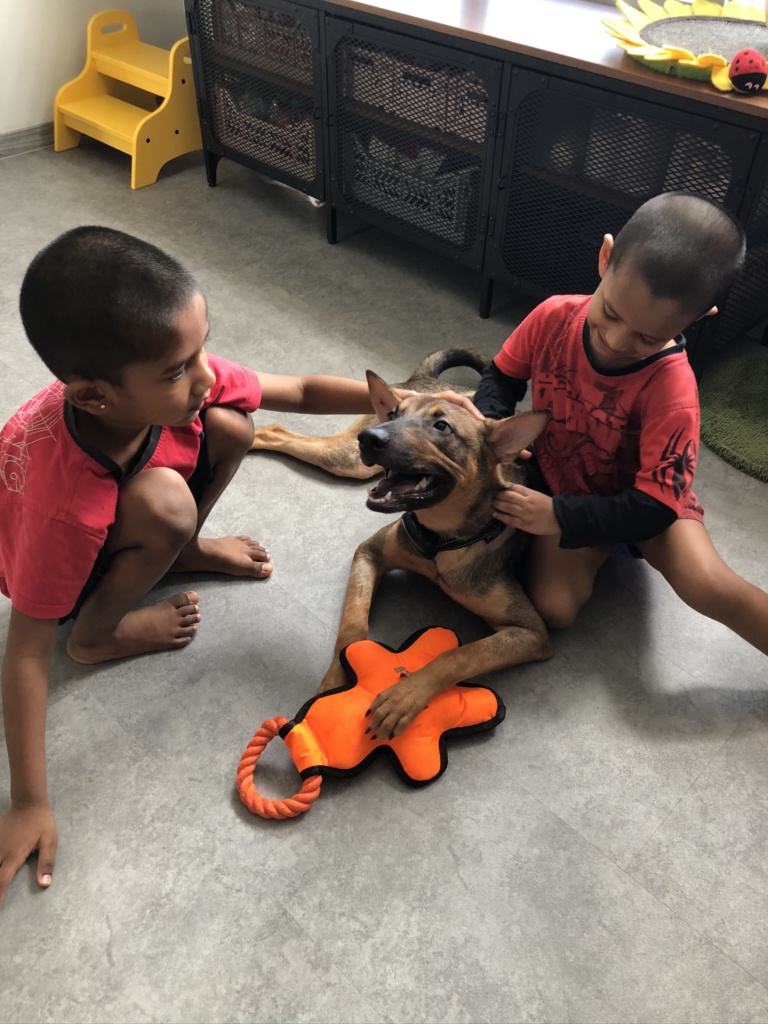
When I was at X dog run, there’s this girl that’s just running free around the dog park, chasing every dog and touching all the dogs thats passing her, what if she met an aggressive one? I don’t see her parents around.
She was chasing Kobe and screaming at the same time, making Kobe super scare, and finally Kobe ran towards me, she wants to reach her hand over to pat him, I said no, but she wants to do it, What am I suppose to do? Obviously I told her off, but honestly what else can I do beside telling her again and again not to touch my dog and explain why..
I had to finally asserted myself and it hadn’t been as painful as I thought it would. I hate not giving people what they want, especially when I’m more than capable of giving it to them (after all, I could have just let them pat Kobe right), but it wasn’t about doing something just because I could do it. It was about finally demanding your respect and attention to adhere to my request of not touching my dog due to safety reasons.
It was about finally taking ownership of my right to say no; it was about me acknowledging to myself that just because I can do something doesn’t mean I should, especially if I don’t want to, because I’m afraid of the consequences.
Dogs are cute, but they also need a lot of training and all good dog-owners take training seriously. Whatever training works for your dog, as long as it’s trained. If you really do love dogs, please start showing respect for other dog owners and acknowledge they are part of the equation, you don’t have to agree to what they think is best for their dog, but at least have the same level of respect because we all just want the best for our dog.
Just as you wouldn’t walk up to a baby or toddler without acknowledging the parent, don’t walk up to a puppy without asking the dog owner first.
After all, not only is it inconvenient and detrimental for a dog owner who is possibly training a dog, it’s also wiser for you: you don’t know the nature of a dog. That cute little dog could be utterly terrified of people, they may cower, bark or even bite you. They may be aggressive or anxious, they may even be blind or deaf, so don’t force yourself onto a dog which can’t give consent, no matter how cute they are.
But if you ask me then yes, I will release my dog from training and you can touch my dog. But if you’re wary and scare, then please don’t request to touch my dog. Thank you.
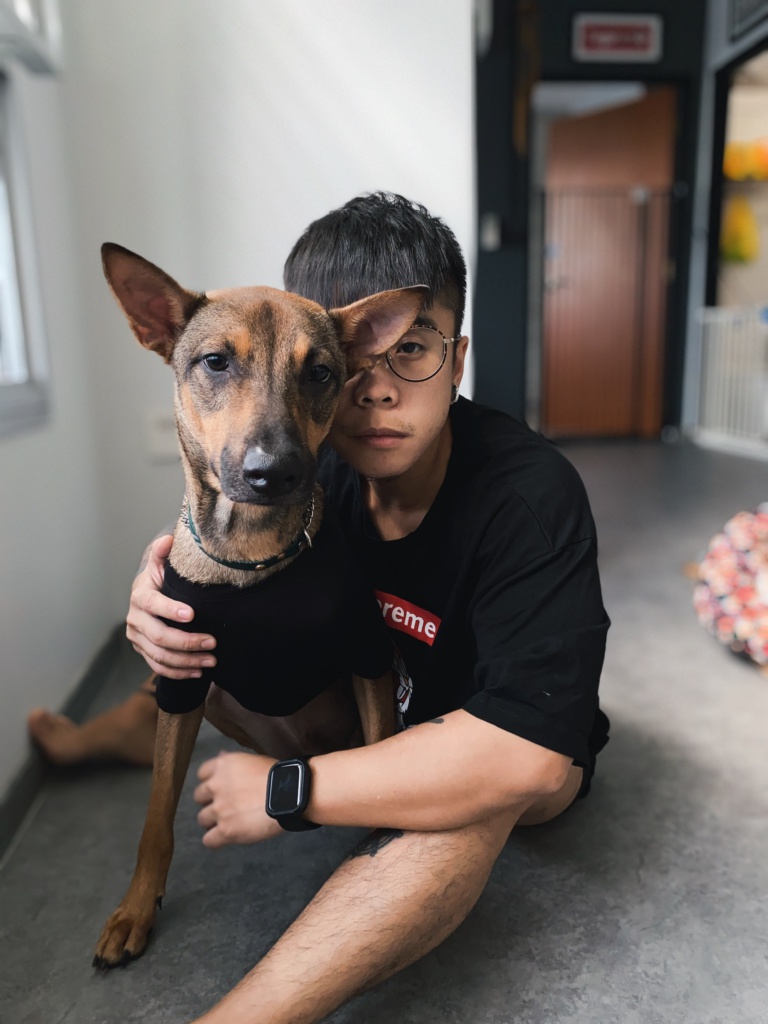
Xoxo,
Kobe’s stuck-up douche dad.

